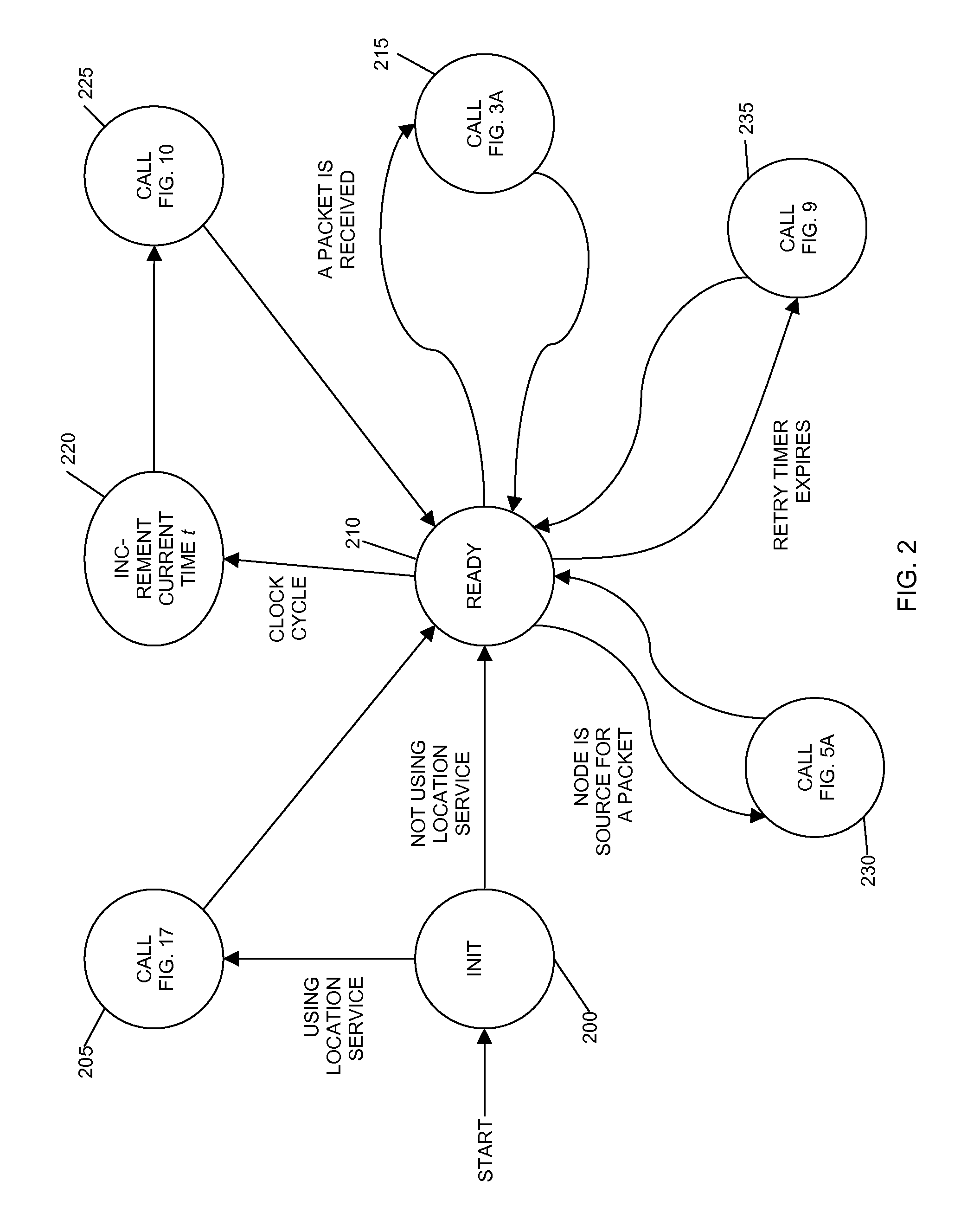Swarm location service for mobile ad hoc network communications
- Summary
- Abstract
- Description
- Claims
- Application Information
AI Technical Summary
Benefits of technology
Problems solved by technology
Method used
Image
Examples
Embodiment Construction
Glossary
[0072]acknowledgement—the act of notifying a sender that a packet it sent was received.[0073]acknowledgement packet—a protocol packet sent for the purpose of notifying a sender that a packet it sent was received.[0074]active learning—a method of gathering and calculating information about a network by periodically broadcasting and receiving protocol packets requesting such information. (see passive learning)[0075]address—an identifier (ID), preferably unique, that refers to a particular node (device) in a network.[0076]Ad hoc On-demand Distance Vector (AODV)—an IETF standard method for routing packets of data in a MANET by establishing a route to a destination only when it is needed.[0077]bidirectional link—the case that occurs when a nonzero transmission pheromone and a nonzero receiving pheromone exist between two nodes, meaning that the two nodes can receive one another's transmissions clearly.[0078]broadcasting range—a measure of the maximum distance from a transmitter t...
PUM
 Login to View More
Login to View More Abstract
Description
Claims
Application Information
 Login to View More
Login to View More - R&D
- Intellectual Property
- Life Sciences
- Materials
- Tech Scout
- Unparalleled Data Quality
- Higher Quality Content
- 60% Fewer Hallucinations
Browse by: Latest US Patents, China's latest patents, Technical Efficacy Thesaurus, Application Domain, Technology Topic, Popular Technical Reports.
© 2025 PatSnap. All rights reserved.Legal|Privacy policy|Modern Slavery Act Transparency Statement|Sitemap|About US| Contact US: help@patsnap.com



